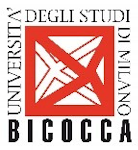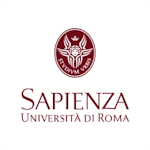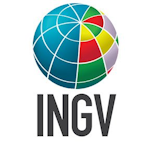THERESA
THErmal infRarEd SBG Algorithms
- Deutsch
- English
- Italiano
- Project duration: -
- Project status: ongoing
- Institute: Institute for Earth Observation
Project funded by
The project THERESA was funded under the CALL FOR IDEAS “ATTIVITÀ SCIENTIFICHE A SUPPORTO DELLO SVILUPPO DELLE MISSIONI DI OSSERVAZIONE DELLA TERRA” of the Italian Space Agency.
Over the last two decades, an ever-increasing amount of data has been acquired by the various space missions dedicated to Earth Observation, expanding the possible applications for multiple subject areas. In particular, thermal sensor missions respond to the need for a better understanding of natural and anthropogenic phenomena responsible for rising temperatures. The future SBG-TIR mission (TIR component of the NASA Surface Biology and Geology mission, developed in collaboration between ASI and NASA-Jet Propulsion Laboratory) will carry into orbit a payload consisting of a SWIR-MWIR sensor and a VNIR camera. The innovative aspects of this mission concern the combined use of the two sensors and their improved performance, for possible synergies and improved geophysical products. In addition, the planned configuration of the thermal sensor (1 SWIR channel, 2 MWIR channels, 5 LWIR channels) complements future missions such as TRISHNA (CNES-ISRO, https://trishna.cnes.fr/) and LSTM (Land Surface Temperature Mission, https://www.esa.int/ESA_Multimedia/Images/2020/11/LSTM) developed as part of the European Space Agency's new Sentinel missions). To date, no operational mission employs more than one channel in the mid-infrared region with a spatial resolution comparable to that of SBG-TIR. In fact, the MODIS sensor with 5 MWIR channels has a spatial resolution of 1 km. The MWIR channels foreseen in the SBG-TIR mission can improve temperature estimates in the case of HTE's (High Temperature Event) such as lava flows and fires, also considering their high saturation value (~1200 K).
The present THERESA proposal aims to support the future SBG-TIR mission for its scientific characterisation. In particular, the specific characteristics of the payload will be analysed to identify all possible applications in the various scientific areas concerning Earth Observation.
The proposal focuses on the analysis of data processing algorithms to obtain Level 1 and subsequent products in order to increase their SRL. The study will make it possible to make the most of the technological features of the sensors planned for the mission, taking full advantage of their peculiarities, through the analysis and development of state-of-art algorithms. Analyses will be conducted from data simulated with radiative transfer models and field experiments. In addition, satellite/aircraft data acquired at the same wavelengths will be considered. A review of the observation requirements for the various applications related to the biosphere, lithosphere and atmosphere will also be carried out. The THERESA project is expected to last two years; the project activities include the training of technical-scientific personnel and include the organisation of a thematic workshop in which the results obtained will be presented. The computing resources, software, laboratories, and any instrumentation in the possession of the individual partners will be used to implement the project.
Lastly, the THERESA proposal is intended to offer support to ASI in the management of industrial activities dedicated to the realisation of the mission, contributing to the definition of scientific and application requirements.
Eurac Research will be involved in the project as provider of external services. In the framework of WP3: Vegetation Monitoring, Eurac will be responsible for the terrestrial energy balance model simulations and the analysis of the sensitivity of the simulated latent heat flux to fractional cover and radiometric temperature view angle.
This project supports the development of our high-resolution evapotranspiration product.
Contact person: Mariapina Castelli, mariapina.castelli@eurac.edu




